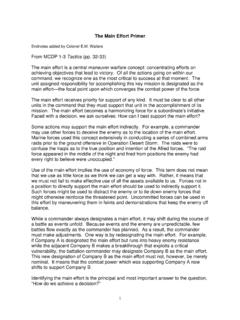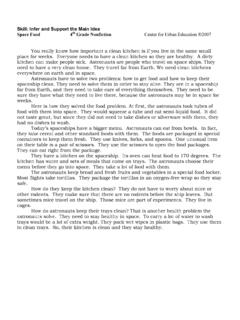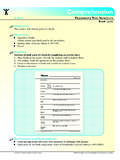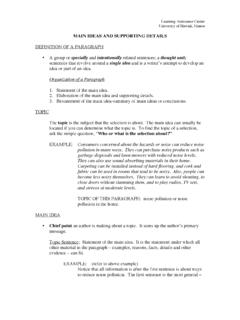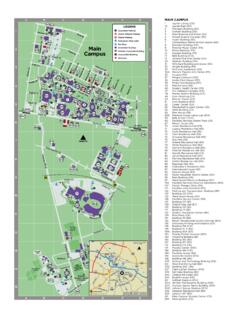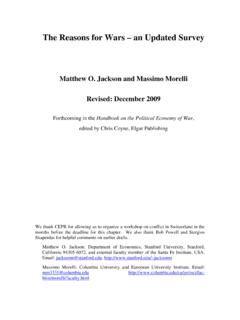Transcription of Engine Bearing Materials - King Racing
1 Engine Bearing Materials Dr. Dmitri Kopeliovich (Research & Development Manager). The durable operation of an Engine Bearing is achieved if its Materials combine high strength (load capacity, wear resistance, cavitation resistance) with softness (compatibility, conformability, embedability.). So the Bearing Materials should be both strong and soft. It sounds paradoxical but all existing Bearing Materials are designed to combine those contradictory properties with a certain compromise. In order to achieve such compromise Bearing Materials have a composite structure (Fig.)
2 1). The structure may be either layered with a soft overlay applied over a strong lining or particulate, in which small particles of a soft material are distributed in a relatively strong matrix. Some bearings combine layered and particulate composite structures. Composite structure of Bearing Materials Typical Engine Bearing structures are presented in Engine Bearing Structure 1. Bi-Metal Bearings presents a magnified cross section of a typical bi-metal Bearing . Microstructure of a bi-metal Bearing Bimetal bearings have a steel back, which supports the Bearing structure.
3 The back provides Bearing rigidity and its press fit under severe conditions of increased temperature and cycling loads. The second layer is the Bearing lining. It is relatively thick. Its thickness is about ". Large thickness of the lining is very important feature of bi-metal bearings. It allows accommodation of great misalignments and other geometry irregularities. It also provides good embedability for both large and small foreign particles. Commonly, the lining is made of an aluminum alloy containing 6-20% of tin. Tin serves as a solid lubricant and provides anti-friction properties (compatibility, conformability, embedability).
4 Another additive is 2-4% of silicon dispersed in aluminum in form of fine particles. Hard silicon strengthens the alloy and also serves as an abrasive polishing the journal surface. Presence of silicon is particularly important for engines with cast iron crankshafts. The alloy may be additionally strengthened by copper, nickel and other elements. The two main layers (steel and lining) are bonded to each other by means of a bonding layer of pure aluminum. King bi-metal Materials have a homogeneous micro-structure, which guarantees the combination of the following Bearing properties: Good fatigue strength due to the both fine micro-structure and hardening effect of silicon and copper.
5 Very good seizure resistance particularly with cast iron crankshafts. This is provided by silicon particles. They continuously polish the crankshaft surface and prevent seizure. Good embedability. The lining is thick so it is capable to absorb both small and large dirt particles circulating with the oil;. Good conformability. In contrast to tri-metal bearings with thin overlays, bi- metal Materials are capable of accommodating greater misalignments;. Good wear resistance due to the relatively hard aluminum alloy, which is harder than the soft overlays of tri-metal bearings.
6 Bi-metal Al-Si bearings bring more "added value" to rebuilt engines, due to their superior handling of adverse conditions such as misalignments, oil starvation, rough journal surface and heat. Types of King Bi-metal Bearings The main grades of the King bi-metal bearings and their designations: AM this is the softest bi-metal material . It contains 20% of tin, 1% of copper and no silicon. AM bearings are used in the passenger cars with low and medium load gasoline engines. SI - is silicon containing material for the medium load gasoline engines, particularly engines using nodular cast iron crankshafts.
7 HP - is silicon containing material for medium load high performance engines with nodular cast iron cranks and also for high load short duration engines. 2. Tri-Metal Bearings with babbitt overlay presents a magnified cross section of a typical tri-metal Bearing . Nickel barrier Babbitt overlay ( ). Copper-lead-tin alloy thick Steel back Microstructure of a tri-metal Bearing In addition to the supporting steel back, tri-metal bearings have an intermediate layer made of a copper alloy containing 20-25% of lead as a solid lubricant and 2-5% of tin as a strengthening additive.
8 The third layer is the lead based overlay (or babbitt) applied over the intermediate layer. The lead based alloy contains about 10% of tin enhancing its corrosion resistance and a small percentage of copper that increases the overlay strength. The thickness of the overlay is only ". The low overlay thickness of tri-metal bearings limits their anti-friction properties like seizure resistance, conformability and embedability. When the thin overlay is removed (even partially) the anti-friction properties drop dramatically. You may ask: why not increase the overlay thickness?
9 Unfortunately the load capacity of a soft overlay is strongly dependent on its thickness. The thinner the overlay, the greater its load capacity. So the overlay thickness is a compromise between the strength and the anti-friction properties. Between the intermediate layer and the overlay there is a thin nickel layer. Nickel serves as a barrier preventing a diffusion of tin from the overlay into the intermediate layer. Thickness of nickel barrier is ". Tri-metal bearings are characterized by: Very good fatigue strength due to the both strong intermediate layer and hardening effect of copper in the relatively thin overlay.
10 Excellent seizure resistance provided by the lead based overlay. Seizure resistance drops sharply when the overlay is removed in direct metal-to-metal contact;. Excellent embedability of small dirt particles;. Excellent conformability for small misalignments. Thus tri-metal material works very well at all times during the presence of the overlay. However the overlay is thin and may be easily removed from the surface. Even partial exposure of the intermediate layer will cause dramatic lowering of the Bearing properties. Tri-metal bearings are more sensitive to misalignments and distortions than bi-metal bearings.


